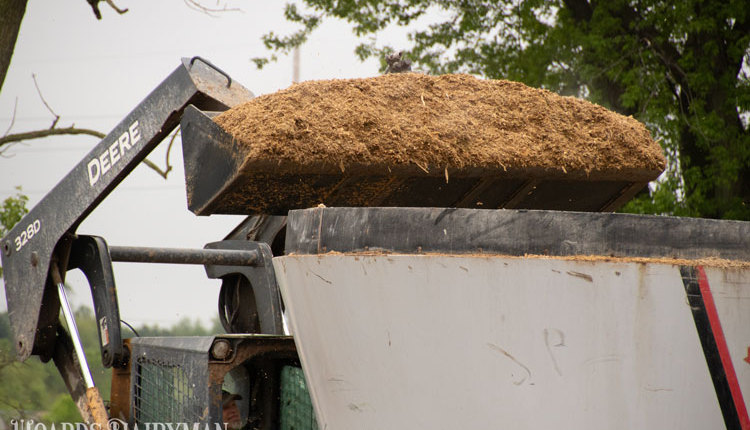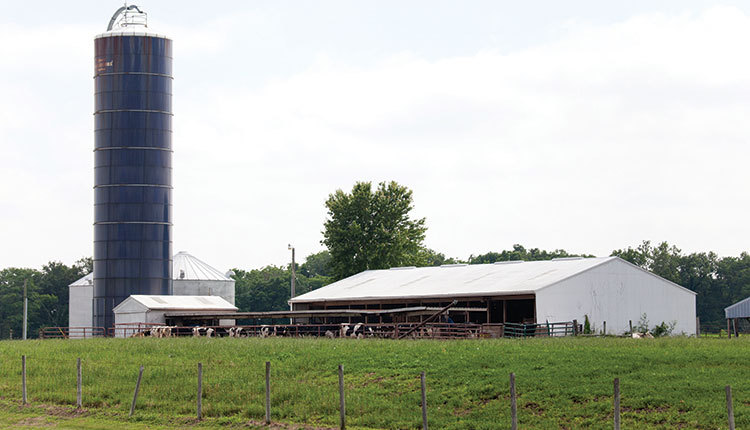
The author is a dairy nutrition consultant for Central Connecticut Cooperative Farmers, who previously managed large dairies in California and Hawaii.
Food and beverage giant, PepsiCo, went on record last year saying that the U.S. market for dairy products "is largely untapped" and, due to the elevated consumer awareness of the health benefits of dairy, there is a "tremendous opportunity for new products to enter the U.S. dairy market." PepsiCo has recently entered into a joint venture with German company Theo Müeller Group to produce Greek-style yogurt here in the U.S. because it sees dairy as an "attractive growth opportunity."
Isn't this ironic? One of the largest companies on earth, after spending decades helping to turn a sizable portion of the U.S. population into sugar junkies with soft drinks, is now directing its marketing genius towards yogurt because of its health benefits. Companies like PepsiCo know how to grow markets and brands, and the dairy industry had better not look this gift horse in the mouth.
The Post-Standard of Syracuse, N.Y., reported in July of last year that Chobani Yogurt, which, in 2005, opened a new plant in the central part of the state, was taking in 50 to 60 tanker loads - 3 million pounds - of milk a day. And it still needs more.
We aren't lining up to add cows
Amazingly, this is happening at the very same time dairy farmers in the U.S. are struggling to keep their financial boats afloat. Even as more milk was produced in the U.S. last year than ever before and dairy farms continued to go out of business, we're being reminded that our industry still has growth opportunities.
Chobani's appearance should be a windfall of epic proportions for New York and Pennsylvania dairy farmers. But supply and demand doesn't work in the dairy industry because of Federal milk pricing policy. Giant conglomerates can take advantage of archaic U.S. milk pricing policy which obligates them to pay only a minimum price for the milk they purchase.
The reason dairy farmers aren't lining up to add more cows is because they're not seeing any more money for their milk and, therefore, are reluctant to take on more debt as they struggle to stay ahead of skyrocketing operating costs. They're only too happy to currently give their milk away for $18 or $19 per hundredweight (cwt.), even though it costs them that much or more to produce it. They breathe a collective sigh of relief because about 13 percent of their milk production was exported last year, and that's why our prices are so "good."
The big humbug that continues to plague our industry is that dairy farmers don't get an adequate piece of the retail value of dairy products to help cover their production costs - even while companies like PepsiCo and Chobani see tremendous growth opportunities. PepsiCo is one of the best in identifying consumer trends and making a buck on them.
In all likelihood, a company like PepsiCo doesn't have the slightest glimmer of a soft spot for the well-being of the American dairy farmer. It will jump on that band wagon of "healthy" snack foods, and the profligate exploitation of the dairy farmer will simply be a means to its own end of profitability and shareholder wealth.
Here at home, somebody's making lots of money as all that milk gets made into cheese, yogurt and ice cream. And it's not the dairy farmer. Yogurt and ice cream are easy products to make, and the return on investment is rapid. Add some fruit, bacteria and call it an interesting name, and it becomes a health food. By the time yogurt makes it into the grocery store, it's costing the consumer between $3 and $4 per pound - or more. That's an expensive glass of milk.
Is consolidation our future?
The argument here is not to criticize the profit margins of processors and retailers. We get told time and time again that dairy products are of tremendous value, and they're one of the best sources of protein and minerals in a healthy diet. In fact, consumers should be paying much more than they do for that cup of superior nutrition, and dairy farmers should be getting a fair share of that retail dollar.
Sadly, the U.S. dairy industry appears to be slowly heading in the same direction that the poultry industry did in the 1970s and 1980s. Consolidation and vertical integration have left that industry dominated by just a few massively large companies. Everything about raising and marketing chickens has been standardized, and the growers are told exactly how to feed and what to feed the chickens they raise. The poultry industry praises the fact that their markets and profits have exploded now that the industry is controlled by just a few large players.
Are we getting closer to that with the dairy industry? Would the dairy industry be better off that way?
Where are we headed?
In 2004, I wrote a piece for Hoard's Dairyman that was entitled, "Will it take 1,000 cows?" Today, there are fewer than 50,000 licensed dairy farms left in the U.S., and the ones that are left continue to grow in herd size to stay in business. Based on this trend, we're not much more than a decade away from the average herd size being 500 cows with fewer than 20,000 dairy farms to handle the 9.5 million cows we have today. That's another 30,000 dairy farms that will disappear, even as growth opportunities abound.
Price volatility, skyrocketing production costs and financial risk are all likely to continue for the dairy farmer. To maintain financial viability and income stability, herd sizes will have to grow. To be sure, not every quaint, 50-cow dairy farm with its red barn, silo and rolling pastures will go away. But, as we've already seen, more and more of them are finding it impossible to leverage the debt required for expansion and automation and requisite economies of scale.
Whether they are big or small, family-owned or listed on Wall Street, dairy farms, regardless of what shape our Federal milk pricing policy takes, will find it more difficult to stay in business unless they form an alliance with a multinational company that will ensure they have a market for their "specialized dairy products."
The big companies in the food-value chain - companies like PepsiCo and Chobani - are becoming bigger and stronger as they seek to gain more market share for their products. These are the companies that will eventually tell us how many cows we may milk and how much money we will get for our milk.
This article appears on page 491 of the August 10, 2013 issue of Hoard's Dairyman.
Food and beverage giant, PepsiCo, went on record last year saying that the U.S. market for dairy products "is largely untapped" and, due to the elevated consumer awareness of the health benefits of dairy, there is a "tremendous opportunity for new products to enter the U.S. dairy market." PepsiCo has recently entered into a joint venture with German company Theo Müeller Group to produce Greek-style yogurt here in the U.S. because it sees dairy as an "attractive growth opportunity."
Isn't this ironic? One of the largest companies on earth, after spending decades helping to turn a sizable portion of the U.S. population into sugar junkies with soft drinks, is now directing its marketing genius towards yogurt because of its health benefits. Companies like PepsiCo know how to grow markets and brands, and the dairy industry had better not look this gift horse in the mouth.
The Post-Standard of Syracuse, N.Y., reported in July of last year that Chobani Yogurt, which, in 2005, opened a new plant in the central part of the state, was taking in 50 to 60 tanker loads - 3 million pounds - of milk a day. And it still needs more.
We aren't lining up to add cows
Amazingly, this is happening at the very same time dairy farmers in the U.S. are struggling to keep their financial boats afloat. Even as more milk was produced in the U.S. last year than ever before and dairy farms continued to go out of business, we're being reminded that our industry still has growth opportunities.
Chobani's appearance should be a windfall of epic proportions for New York and Pennsylvania dairy farmers. But supply and demand doesn't work in the dairy industry because of Federal milk pricing policy. Giant conglomerates can take advantage of archaic U.S. milk pricing policy which obligates them to pay only a minimum price for the milk they purchase.
The reason dairy farmers aren't lining up to add more cows is because they're not seeing any more money for their milk and, therefore, are reluctant to take on more debt as they struggle to stay ahead of skyrocketing operating costs. They're only too happy to currently give their milk away for $18 or $19 per hundredweight (cwt.), even though it costs them that much or more to produce it. They breathe a collective sigh of relief because about 13 percent of their milk production was exported last year, and that's why our prices are so "good."
The big humbug that continues to plague our industry is that dairy farmers don't get an adequate piece of the retail value of dairy products to help cover their production costs - even while companies like PepsiCo and Chobani see tremendous growth opportunities. PepsiCo is one of the best in identifying consumer trends and making a buck on them.
In all likelihood, a company like PepsiCo doesn't have the slightest glimmer of a soft spot for the well-being of the American dairy farmer. It will jump on that band wagon of "healthy" snack foods, and the profligate exploitation of the dairy farmer will simply be a means to its own end of profitability and shareholder wealth.
Here at home, somebody's making lots of money as all that milk gets made into cheese, yogurt and ice cream. And it's not the dairy farmer. Yogurt and ice cream are easy products to make, and the return on investment is rapid. Add some fruit, bacteria and call it an interesting name, and it becomes a health food. By the time yogurt makes it into the grocery store, it's costing the consumer between $3 and $4 per pound - or more. That's an expensive glass of milk.
Is consolidation our future?
The argument here is not to criticize the profit margins of processors and retailers. We get told time and time again that dairy products are of tremendous value, and they're one of the best sources of protein and minerals in a healthy diet. In fact, consumers should be paying much more than they do for that cup of superior nutrition, and dairy farmers should be getting a fair share of that retail dollar.
Sadly, the U.S. dairy industry appears to be slowly heading in the same direction that the poultry industry did in the 1970s and 1980s. Consolidation and vertical integration have left that industry dominated by just a few massively large companies. Everything about raising and marketing chickens has been standardized, and the growers are told exactly how to feed and what to feed the chickens they raise. The poultry industry praises the fact that their markets and profits have exploded now that the industry is controlled by just a few large players.
Are we getting closer to that with the dairy industry? Would the dairy industry be better off that way?
Where are we headed?
In 2004, I wrote a piece for Hoard's Dairyman that was entitled, "Will it take 1,000 cows?" Today, there are fewer than 50,000 licensed dairy farms left in the U.S., and the ones that are left continue to grow in herd size to stay in business. Based on this trend, we're not much more than a decade away from the average herd size being 500 cows with fewer than 20,000 dairy farms to handle the 9.5 million cows we have today. That's another 30,000 dairy farms that will disappear, even as growth opportunities abound.
Price volatility, skyrocketing production costs and financial risk are all likely to continue for the dairy farmer. To maintain financial viability and income stability, herd sizes will have to grow. To be sure, not every quaint, 50-cow dairy farm with its red barn, silo and rolling pastures will go away. But, as we've already seen, more and more of them are finding it impossible to leverage the debt required for expansion and automation and requisite economies of scale.
Whether they are big or small, family-owned or listed on Wall Street, dairy farms, regardless of what shape our Federal milk pricing policy takes, will find it more difficult to stay in business unless they form an alliance with a multinational company that will ensure they have a market for their "specialized dairy products."
The big companies in the food-value chain - companies like PepsiCo and Chobani - are becoming bigger and stronger as they seek to gain more market share for their products. These are the companies that will eventually tell us how many cows we may milk and how much money we will get for our milk.










